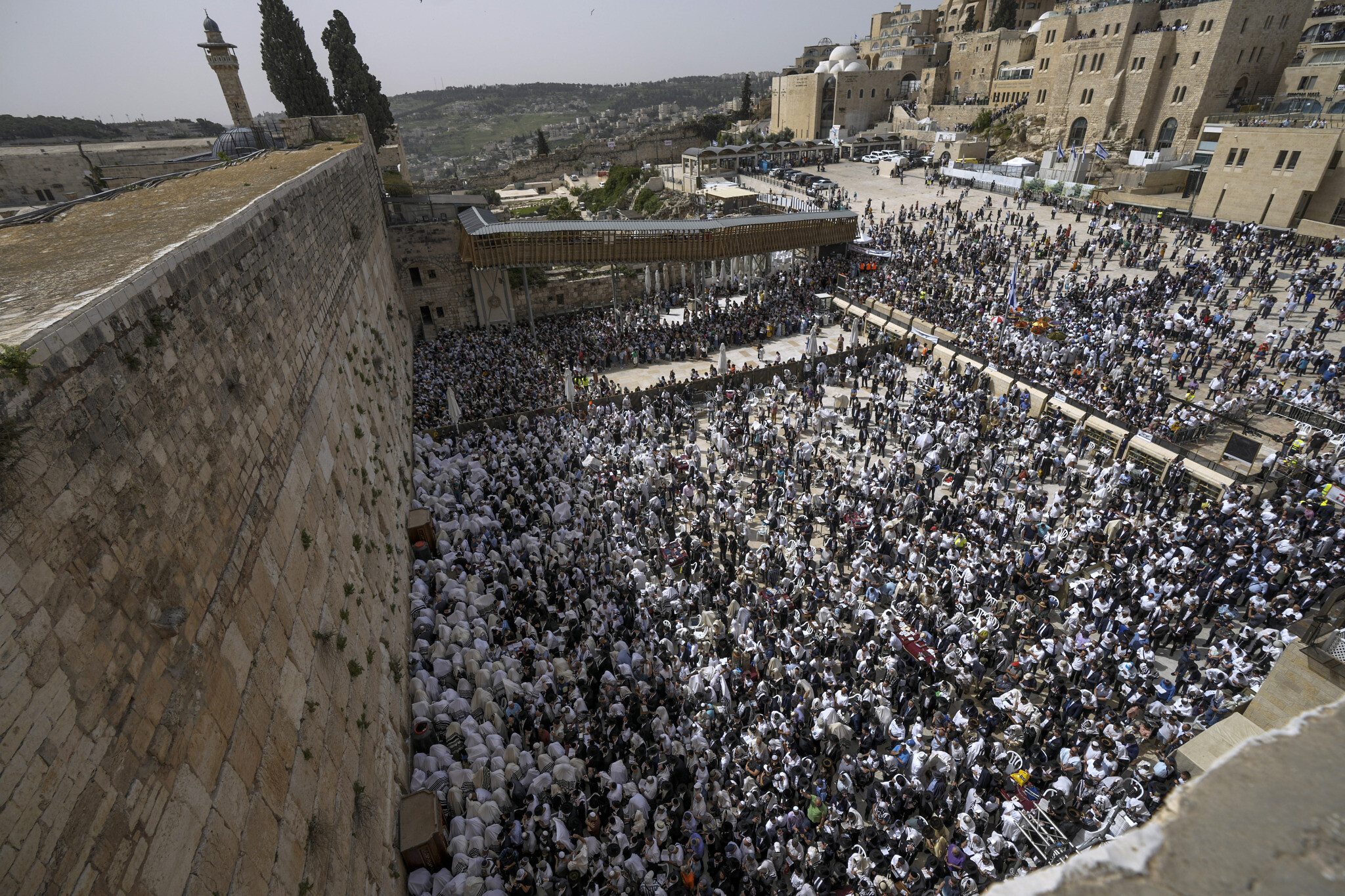
The Second Temple in Jerusalem was destroyed in 70 AD by the Roman Emperor Titus, and to this day only the Western Wall or Wailing Wall remains. Although it is not the Temple Wall itself, but only the remains of the supporting structures that once fortified the Temple Mount, the Western Wall is one of the principal holy sites of the Jewish people.
The Western Wall owes its name to the Jewish custom of mourning for the Second Temple and also for the First Temple, both of which were destroyed on the same day – the ninth of Av* – but on different dates. Jews consider it a day of mourning.
Every year, on the ninth of Av, large numbers of worshippers flock to the Wall. In 2007, more than 100,000 people attended the prayer. According to Jewish law, it is obligatory to weep and tear one’s clothes when visiting the Western Wall and seeing the ruined site.
The history of the Western Wall
In the 10th century BC, King Solomon built the First Temple, which lasted until the Babylonians completely destroyed it in 586 BC. Many years later, Herod the Great began the extensive construction (enlargement) of the Temple Mount. The construction of the Second Temple lasted for 10 years and continued even after the death of Herod the Great. A 57-metre-long section of the Wall that remained when the Romans destroyed the Second Temple in AD 70 during the First Jewish War is a holy site for Jews around the world. The entire Wall is 488 metres long and most of it is hidden behind residential buildings. People come to the Wall to atone for their sins and ask for forgiveness.
The subsequent history of the Wall is amazing. At the beginning of the New Age, Jews were forbidden to approach the Temple Mount (only allowed once a year on special holidays). In 425, the Jews of Galilee turned to the Empress Elia Eudocia. This restored their right to pray at the Wall and its ruins.
Year after year, the Wall was completed and grew in size. In the 16th century, Sultan Suleiman the Magnificent, who by the way was very sympathetic to the Jews, ordered the adjacent areas to be built and special facilities to be provided for prayer. The entrance was then made through the Moroccan quarter. In 1877, the Jews expressed their desire to buy it back in order to have freer access to the Wall, but due to infighting, the transaction did not take place. In 1915, Jews were again denied access to the holy site.
In 1920, Jews and Muslims began to openly express their disagreement over ownership of the Wall. The conflict was evolving from peaceful to military. It was linked to the beginning of the British takeover of the Wall, which lasted until 1948, and eventually had a negative impact on Jewish access to the holy site. The first serious confrontation, with a majority of women and elderly people, took place in 1928: Muslims suspected that Jews intended to take over the Al-Aqsa Mosque on the other side of the Wall, and Jews, in turn, claimed ownership of the holy site.
In 1929, a mass demonstration of Jews at the holy site and raising the Zionist flag led to the Hebron massacre. The final conquest of the Old City and the Western Wall came at the hand of David Ben-Gurion in 1967.
Where does the tradition of writing and leaving notes at the Western Wall come from?
The practice of leaving notes addressed to God at the Western Wall began more than 300 years ago. The oldest description of this practice dates back to the early 18th century. To this day, people of various nationalities leave messages with their requests and prayers in the cracks between the stones. Once a month, the notes are collected and buried in special containers on the Mount of Olives. It is believed that all written messages must then reach the Almighty.
You may also like:
